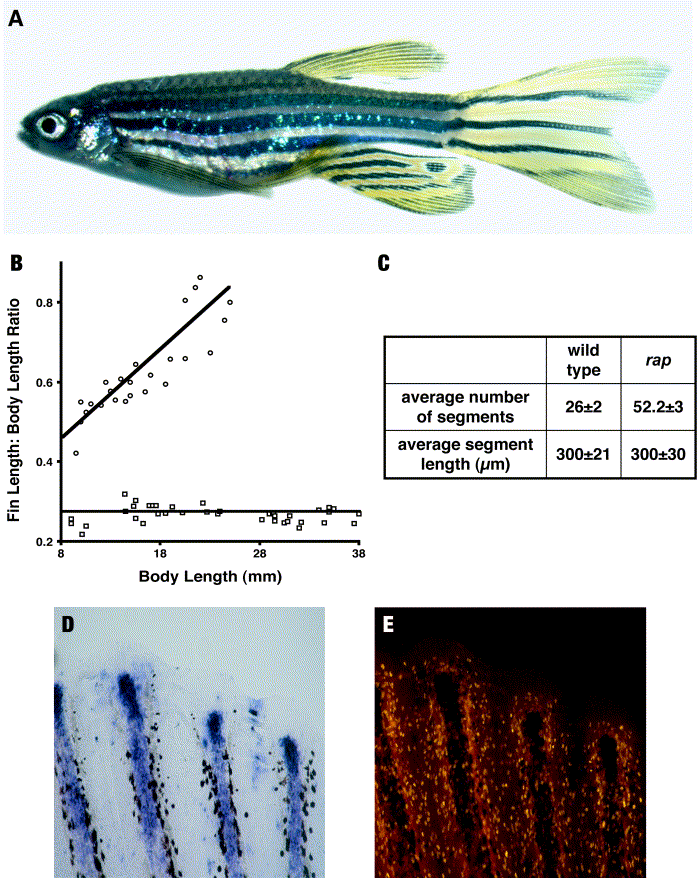Fig. 6 Synchronous overgrowth in rapunzel. (A) The rapunzel heterozygote has symmetrically fin overgrowth. (B) Fin length: body length ratio plotted against body length for rap (circles) and wild type (squares) clearly demonstrates allometric fin growth in rap in contrast to isometric growth seen in the wild type caudal fin. Lines represent approximate growth curves. (C) Fin overgrowth in rap is due to increased segment number (n = 4 fin rays for each of rap and wild type; P < 0.05). There is no significant difference in fin ray segment length between rap and wild type (n = 30 segments for each of rap and wild type; P > 0.05). Growth was assessed in 6-month-old rapunzel caudal fins via fa93e10 gene expression (D) and BrdU labeling (E).
Reprinted from Developmental Biology, 259(2), Goldsmith, M.I., Fisher, S., Waterman, R., and Johnson, S.L., Saltatory control of isometric growth in the zebrafish caudal fin is disrupted in long fin and rapunzel mutants, 303-317, Copyright (2003) with permission from Elsevier. Full text @ Dev. Biol.

